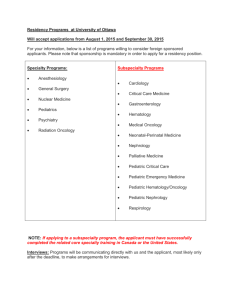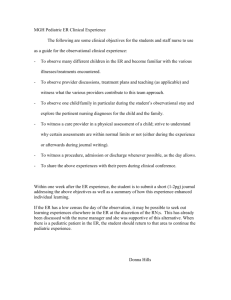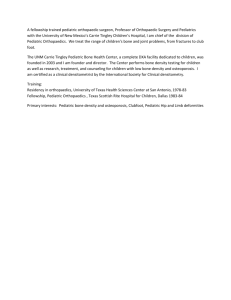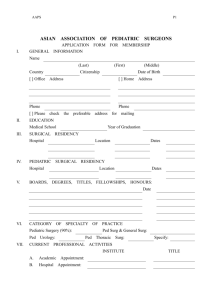PediPIPES - Adam Kushner MD, MPH, FACS
advertisement
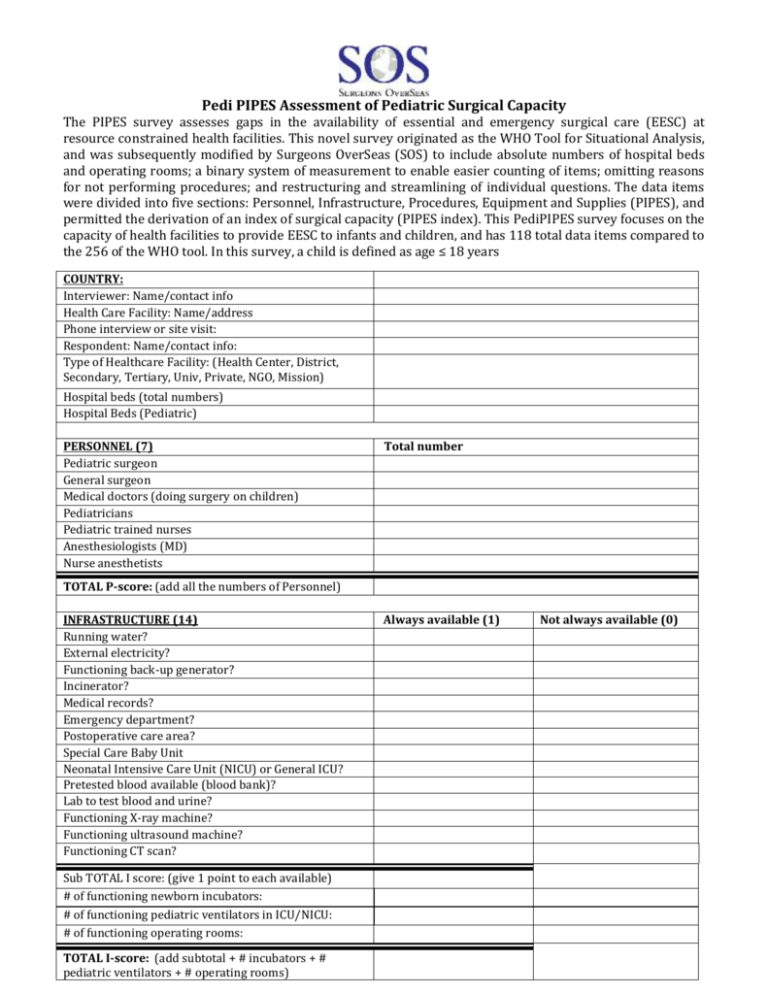
Pedi PIPES Assessment of Pediatric Surgical Capacity The PIPES survey assesses gaps in the availability of essential and emergency surgical care (EESC) at resource constrained health facilities. This novel survey originated as the WHO Tool for Situational Analysis, and was subsequently modified by Surgeons OverSeas (SOS) to include absolute numbers of hospital beds and operating rooms; a binary system of measurement to enable easier counting of items; omitting reasons for not performing procedures; and restructuring and streamlining of individual questions. The data items were divided into five sections: Personnel, Infrastructure, Procedures, Equipment and Supplies (PIPES), and permitted the derivation of an index of surgical capacity (PIPES index). This PediPIPES survey focuses on the capacity of health facilities to provide EESC to infants and children, and has 118 total data items compared to the 256 of the WHO tool. In this survey, a child is defined as age ≤ 18 years COUNTRY: Interviewer: Name/contact info Health Care Facility: Name/address Phone interview or site visit: Respondent: Name/contact info: Type of Healthcare Facility: (Health Center, District, Secondary, Tertiary, Univ, Private, NGO, Mission) Hospital beds (total numbers) Hospital Beds (Pediatric) PERSONNEL (7) Pediatric surgeon General surgeon Medical doctors (doing surgery on children) Pediatricians Pediatric trained nurses Anesthesiologists (MD) Nurse anesthetists Total number TOTAL P-score: (add all the numbers of Personnel) INFRASTRUCTURE (14) Running water? External electricity? Functioning back-up generator? Incinerator? Medical records? Emergency department? Postoperative care area? Special Care Baby Unit Neonatal Intensive Care Unit (NICU) or General ICU? Pretested blood available (blood bank)? Lab to test blood and urine? Functioning X-ray machine? Functioning ultrasound machine? Functioning CT scan? Sub TOTAL I score: (give 1 point to each available) # of functioning newborn incubators: # of functioning pediatric ventilators in ICU/NICU: # of functioning operating rooms: TOTAL I-score: (add subtotal + # incubators + # pediatric ventilators + # operating rooms) Always available (1) Not always available (0) Pedi PIPES Assessment of Pediatric Surgical Capacity PROCEDURES (46) Resuscitation Suturing Wound debridement Incision & drainage of abscess Laparotomy Tracheostomy Chest tube insertion Burn management Non-operative Reduction of intussusception Appendectomy Removal of airway and esophageal foreign bodies Bowel resection and anastomosis Male circumcision Skin grafting Pediatric hernia repair Pediatric abdominal wall defects Repair Imperforate anus Ladd procedure Orchiopexy Rectal biopsy Pullthrough for Hirschsprung disease Repair of testicular torsion Resection solid abdominal mass Thoracotomy Insertion G-tube Repair esophageal atresia Repair intestinal atresia Creation Intestinal stomas Closure intestinal stomas Repair imperforate hymen Pyloromyotomy Ovarian cystectomy Fracture Splinting Casting for Fracture Traction (closed fracture) Treatment of Open Fracture Management of Osteomyelitis Amputation Non-operative treatment of Clubfoot Contracture release Laparoscopic surgery Repair Spina Bifida Regional anesthesia blocks Spinal anesthesia Ketamine anesthesia General anesthesia TOTAL Pr-score: (add all procedures done) Done (1) Not done (0) Pedi PIPES Assessment of Pediatric Surgical Capacity Equipment (22) Oxygen: compressed (cylinder) Oxygen: concentrator Resuscitator bag valve & mask (paediatric) Oropharyngeal airway (paediatric) Endotrachael tubes (pediatric) Anesthesia machine Pulse oximeter Oxygen mask & tubing Stethoscope Blood pressure measuring equipment (Pediatric cuffs) Thermometer Weighing Scale (Infant) Surgical Instrument sets (abdominal) Kidney dish stainless steel Sterilizer (autoclave) Suction pump (manual or electric) Electrocautery machine Apneic alarm detector/Apnea monitor Syringe pumps Neonatal T-piece (e.g. Jackson Rees) Endoscopes (any of esophagoscope/bronch/cysto) Operating room lights TOTAL E-score: (add all Equipment available) Always available (1) Not always available (0) Pedi PIPES Assessment of Pediatric Surgical Capacity SUPPLIES (26) Always available/ sufficient (1) Not always available/ sufficient (0) Gloves (sterile) Gloves (examination) Nasogastric tubes 12F or smaller Intravenous fluid infusion sets Blood transfusion sets IV cannulas Syringes Disposable needles Tourniquet Sterile gauze Bandages sterile Adhesive Tape Suture (absorbable) Suture (non-absorbable) Urinary catheters (must include 6F) Sharps disposal container Scalpel blades Face masks Eye protection (goggles, safety glasses) Apron Boots (theatre shoes) Gowns (for surgeon/scrub nurse) Drapes (for operations) Chest tubes 12F or smaller Trach tubes Laparoscopic supplies Total S-score: (add all supplies sufficient available) A total PediPIPES score is calculated by summing the number of the Personnel, Infrastructure and number of operating rooms, Procedure, Equipment and Supplies scores. This number was then divided by the total number of data items (118) and multiplied by 10 to create the PediPIPES index. There is no maximum number for the PediPIPES index. P-score: (no maximum) I-score: (maximum XX plus # of functioning incubators, pediatric ventilators, and ORs) Pr-score: (maximum of XX) E-score: (maximum of XX) S-score: (maximum of XX) TOTAL PediPIPES SCORE: Divide the total score by 118 and multiply by 10 for the PIPES- index: (TOTAL PediPIPES SCORE / 118) x 10 = Questions regarding PediPIPES or access to an iPad application can be forwarded to: reinou@humanitariansurgery.org


